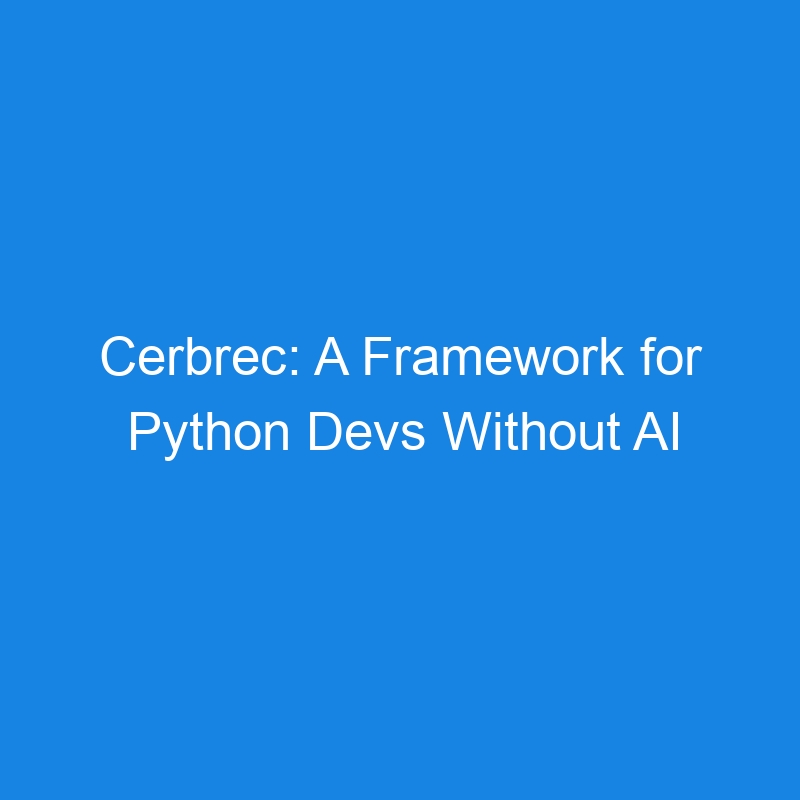
Researchers love PyTorch. However, it takes considerable skill to use the framework for deep learning.
Cerbrec is building a graph-based deep learning AI framework for researchers and developers. With its drag-and-drop interface, people with some knowledge of Python can use Cerbrec ‘s flagship product, Cerbrek Graphbook, as a PyTorch visualization platform without the expertise that is generally required to use the massively popular deep learning framework.
“We are mainly targeting developers without previous AI development experience but have some experience in software development,” said Garret Wang, co-founder and CEO at Cerbrec. “They might be API developers, IT engineers or researchers.”
Typical users have Python programming experience. And the pain point is that it would take a lot of time for them to actually build an AI that works,” Wang said. Most developers, he said, lack the technical skills to scale programs and systems.
“We take care of all the infrastructure,” Wang said. “We take care of all the scalability. All they need to worry about is to focus on one single GUI interface where they can drag and drop, understand how their data flows through the model, and then how the data gets transformed so they can actually prune the model and basically innovate with their own data sets that becomes their IP, their own AI.”
How Cebrec Works
Cerbrec’s visualization platform, Wang said, uses a flowchart-style interface. It interacts directly with the NVIDIA GPU and AWS Trainium, the Amazon Web Services accelerator. Cerbrec announced support for Trainium at re: Invent. Wang and the Cerbrec team were one of several companies selected for the AWS Generative AI Accelerator.
Cerbrec caters to enterprise teams that don’t get data science allocations but have many AI use cases. This is why, in part, Cerbrec provides the visualization platform and data processing.
Wang said they typically see customers saying they have a lot of data sets. They want their data set problem solved first. “So when we build a framework, we start with preprocessing. What we’ve learned is that you have to have the data process before you actually fit into the AI model out there.”
Customers can toggle between Nvidia GPUs and AWS Traimium. They can use either of them and then, depending on their usage, there may be cost savings from one over the other.
“We have a whole stack with the AWS Cloud platform,“ Wang said. “That includes the data storage with S3 and other databases out there. And then we provide EKS for the Kubernetes Cloud.
“The platform is not just about drag and drop — it’s to have a real-time data interaction,“ Wang said. “In addition to that, you also have training and deployment. That requires a lot of nodes out there. And that’s where [Amazon Elastic Kubernetes Service] comes in.”
A Fast-Growing AI Data Visualization Market
By any measure, Cerbrec is not alone in the data visualization world for deep learning models. Google and Microsoft have their tools. And there are many other vendors, such as AIMultiple, Akkiko, Domo, Explo, Neptune.AI, Polymer, Thoughtspot, XenonStack and many others.
What helps Cerbrec is its partnership with AWS and the resources it provides. The capability to do preprocessing gives the company some advantage.
Cerbrec also has a business model that gives it some distinction. The company is explicitly addressing the biotech and pharmaceutical market, compared to a broader play in the developer market.
The post Cerbrec: A Framework for Python Devs Without AI Experience appeared first on The New Stack.
